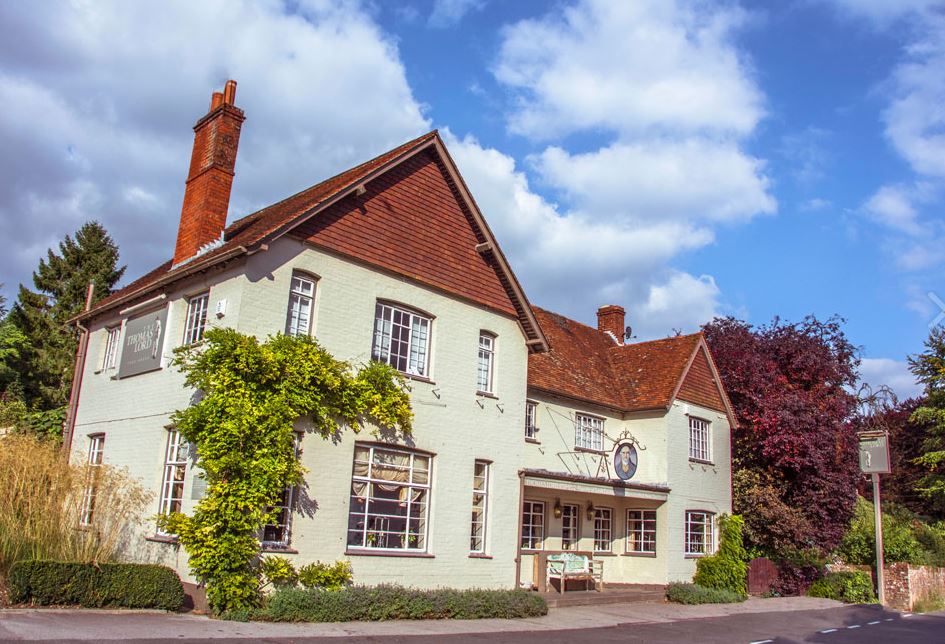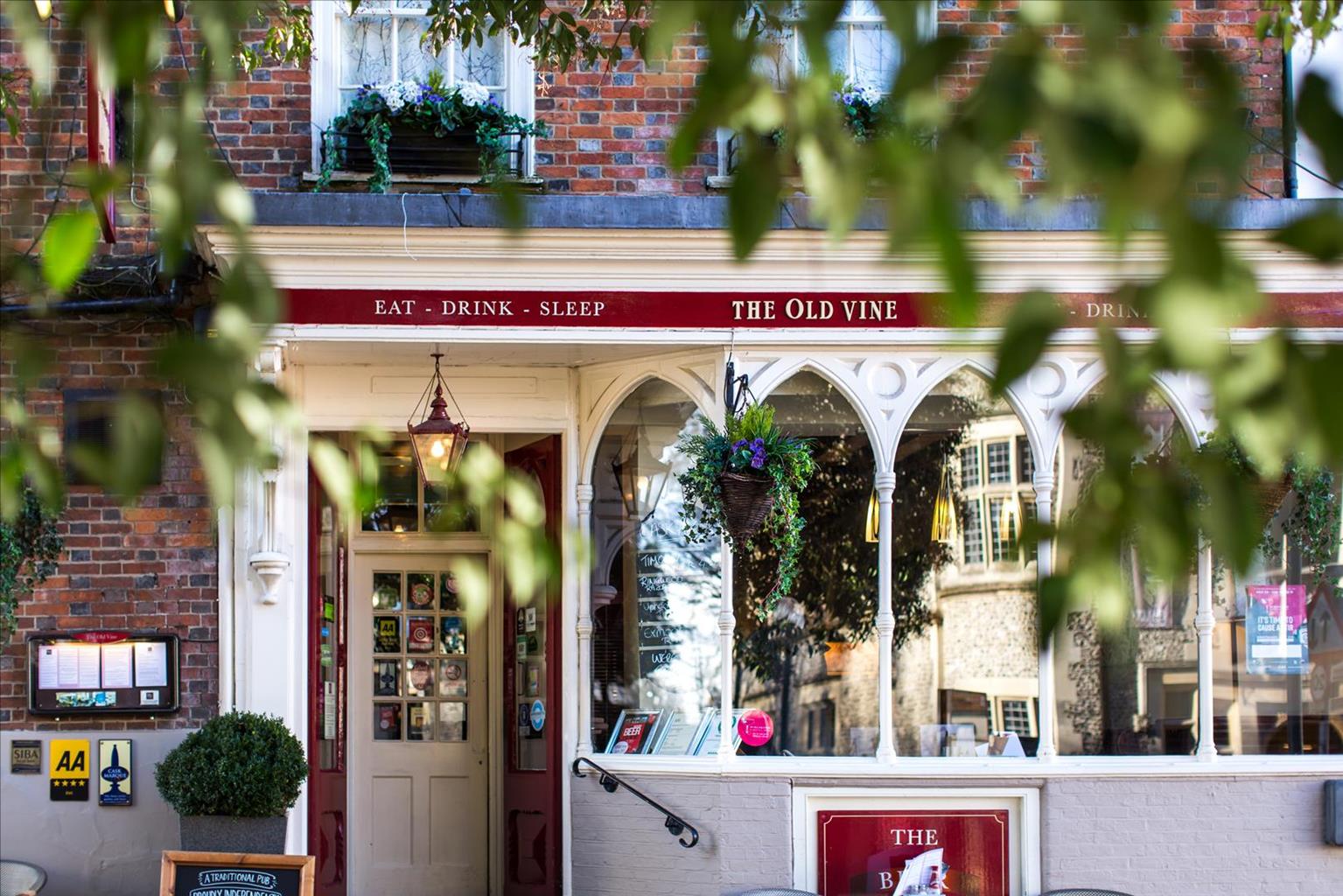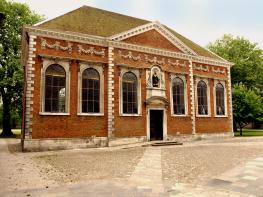The Swan Inn is a former coaching inn dating back to the 18th century and remains a busy and…
Around the Alresfords – a watercress walk

Exploring the 'new' market town at the heart of Hampshire's watercress industry.
9.4 miles (15.1kms)
About the walk
New Alresford (pronounced Allsford) is not very new at all. In fact, this delightful place, one of Hampshire’s most picturesque small towns, was ‘new’ in 1200, when Godfrey de Lucy, Bishop of Winchester, wanted to expand the original Alresford — Old Alresford. He dammed the River Arle, creating a 200-acre (81ha) pond, and built a causeway (the Great Weir) to link Old Alresford with his new community. His ‘New Market’, as it was first called, thrived to become a prosperous wool town, with a market being held in Broad Street. Most of the medieval timber-framed houses were destroyed by two devastating fires during the 17th century, one in 1644 when the Royalists set the town alight following the Battle of Cheriton. As a result, much of the architecture is Georgian, notably along sumptuous Broad Street, which is lined with lime trees and elegant colour-washed houses. Mary Russell Mitford, the authoress of Our Village which sketches her country life, was born in Broad Street in 1787.
Close to both Old and New Alresford you will find an intricate network of crystal-clear chalk streams, rivulets and channels that form the rivers Arle and Itchen and the Candover Stream. These provide perfect conditions for one of Alresford’s major industries, the production of watercress, which continues to thrive.
The Grange is an important house architecturally, being designed in 1804 by William Wilkins, architect of the National Gallery, in the Greek Revivalist style. The majestic building looks more like a Greek temple, with a Parthenon-like portico supported by two rows of giant Doric columns. It commands a superb position overlooking a lake and rolling parkland. Old Alresford is tiny, with an interesting 18th-century church and two substantial Georgian houses. Make time to visit the church to see the striking monument to Jane Rodney. Admiral Lord Rodney, who is buried in the family vault, built Old Alresford House and is famous for spectacularly defeating the Spanish fleet off Cape St Vincent in 1780.
Walk directions
From the car park walk down Station Road to the T-junction with West Street. Turn right, then left down Broad Street and keep left at the bottom along Mill Hill. Halfway down, turn left into Ladywell Lane and soon after join the river bank and pass the attractive timbered and thatched Fulling Mill Cottage which straddles the River Arle.
Continue to the bottom of Dean Lane and turn right to keep to the riverside path. Cross a footbridge over the river at the redbrick Eel House, and ascend to pass a modern home, Drove House. Continue along a fenced path and then, on meeting the concrete driveway, turn right up it to the lane. Turn left at the lane and, as it bends left, fork right onto the Wayfarer’s Walk and follow it to a junction of tracks. Bear right uphill to a lane beside Pinglestone Barn.
Turn left, descend to Fobdown Farm and take the road on the right beside the farm buildings. Follow the track ahead. On reaching a T-junction of tracks, turn left and keep to the track for 0.5 miles (800m) to a lane. Just before you reach the lane, the field on your left hides the site of the lost medieval village of Abbotstone, once a flourishing community with a manor, church and mill.
Bear right downhill, then right again along a track signed to Abbotstone Farmhouse. Keep ahead at the first junction, then ignore the waymarked track right (Wayfarer’s Walk), and proceed ahead on the track which, in 0.5 miles (800m), descends to a lodge and the entrance to The Grange.
Turn left at Swarraton Lodge and follow the drive for 0.25 miles (400m) to visit this fine building, then retrace your steps, bearing left at Swarraton Lodge to the B3046. Turn right and immediately go through a kissing gate by the bus shelter into woodland. Continue through a second kissing gate then cross a driveway and follow the enclosed path left, beside the drive. Bear right alongside woodland to a tarmac drive. Cross straight over into woods to a road by a house. Turn left and left again before the gate to follow the footpath into Northfield Plantation. Keep ahead on the broad path, merging with a track.
Leave the wood and descend along the field edge to a crossing of paths by a derelict barn. Proceed ahead following the telephone wires above to a gap in the hedge at the top of the field and follow the grassy path between fields.
Continue to beneath the telephone wires and pass a metal barn on the left, then after 75yds (70m) turn right onto a permissive path and walk along the field edge to a crossing of tracks. Turn left and follow the track for 0.5 miles (800m), gently descending into Old Alresford. Pass watercress beds on your right and follow the road right, beside the green, to reach the B3046.
Cross over and follow the pavement right to a lane opposite St Mary’s church. Visit the church, cross the road and turn left to a grass triangle by a junction. Bear right along the lane, signed to Abbotstone and take the footpath ahead over a stream and beside watercress beds to Mill Hill and Broad Street.
Additional information
Riverside paths, tracks, field, woodland paths and roads
River valley and undulating farmland dotted with woodland
Keep dogs under control
OS Explorer OL32 Winchester, New Alresford & East Meon
Pay-and-display car park off Station Road, New Alresford
Station Road, New Alresford
WALKING IN SAFETY
Read our tips to look after yourself and the environment when following this walk.
Find out more
Also in the area
About the area
Discover Hampshire
Hampshire’s varied landscape of hills and heaths, downlands and forests, valleys and coast is without rival in southern England. Combine these varied landscapes and terrains with secluded and idyllic villages, complete with thatched and timber-framed cottages and Norman churches, elegant Georgian market towns, historic ports and cities, restored canals and ancient abbeys, forts and castles, and you have a county that is paradise for lovers of the great outdoors.
If you’re a walker, stride out across the high, rolling, chalk downland of the north Hampshire ‘highlands’ with far-reaching views, walk through steep, beech-clad ‘hangers’ close to the Sussex border. Or perhaps take a gentler stroll and meander along peaceful paths through unspoilt river valleys, etched by the sparkling trout streams of the Test, Itchen, Avon and Meon. Alternatively, wander across lonely salt marshes and beside fascinating coastal inlets or, perhaps, explore the beautiful medieval forest and heathland of the New Forest, the jewel in Hampshire’s crown.
Nearby stays
Restaurants and Pubs
Nearby experiences
Recommended things to do
Why choose Rated Trips?
Your trusted guide to rated places across the UK
The best coverage
Discover more than 15,000 professionally rated places to stay, eat and visit from across the UK and Ireland.
Quality assured
Choose a place to stay safe in the knowledge that it has been expertly assessed by trained assessors.
Plan your next trip
Search by location or the type of place you're visiting to find your next ideal holiday experience.
Travel inspiration
Read our articles, city guides and recommended things to do for inspiration. We're here to help you explore the UK.
















